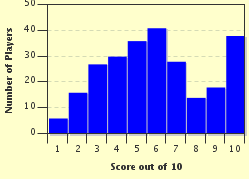Quiz Answer Key and Fun Facts
1. On a trip to Canada, I bring along some Canadian money that I have lying around in an attempt to get rid of it. Making a quick stop at a convenience store, I spend a few 50-cent pieces I had that were minted in the 1950s. In doing so, what would best describe my actions?
2. Browsing an antique shop, I once saw a 1-ounce silver coin. It was issued by the Cook Islands in 1992, and has a face value of $50. Knowing that the Cook Islands are a dependency of New Zealand, I did some research into the Cook Islands dollar and discovered what?
3. Another day, another dollar? An American working during the 1880s may have found himself being paid with an unusual sort of money: a so-called trade dollar. What would generally happen if he tried to spend it?
4. Being a business owner in 1880s America was not necessarily better than being a worker. Suppose it's 1883, and a deaf, mute man wants to buy a cigar (cost: 5 cents). He gives you a gold-colored coin with a big V (indicating "5") on the reverse. How should you respond?
5. Sometimes, a country's money is demonetized when it switches over to an entirely new currency, rendering the old money unspendable. Which of these monetary units is still spendable, because the country that uses it has NOT switched over to the Euro?
6. In the UK, I know they use pounds and pence. Attempting to spend some pounds and pence there, I am informed that they are too old. It turns out that British coins from before 1971 were demonetized in an event called what?
7. Accepting that most European Union nations use the Euro, I turn my attention to Switzerland instead. Finding a valuable Swiss 50-franc note issued by the Swiss National Bank in 1988, I could try to spend it at a shop only to have it rejected. What gives?
8. Some of the most interesting coins I've ever seen are from Somalia. They are guitar-shaped coins, dated 2004, bear the coat of arms of Somalia, and carry a face value of one dollar. Though made as a collectible, I could attempt to spend them while in Somalia -- and be thoroughly rebuked. Why?
9. Taking a trip to Zimbabwe, I exchange my American dollars for some of the local Zimbabwean dollars. Most of the banknotes I get come in very high denominations, in fact, I find myself holding quadrillions of Zimbabwean dollars. Is this a lucky turn of events or what?
10. Browsing eBay's paper money section, I see a curious item: an Antarctica $1 bill. It is a colorful polymer note dated 2011 and features numerous penguins on it. Where would such a bill be considered legal tender?
Source: Author
nautilator
This quiz was reviewed by FunTrivia editor
stedman before going online.
Any errors found in FunTrivia content are routinely corrected through our feedback system.

